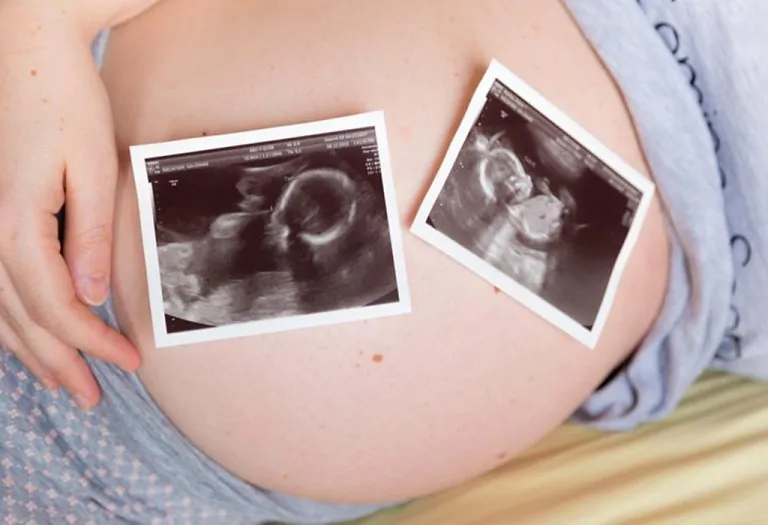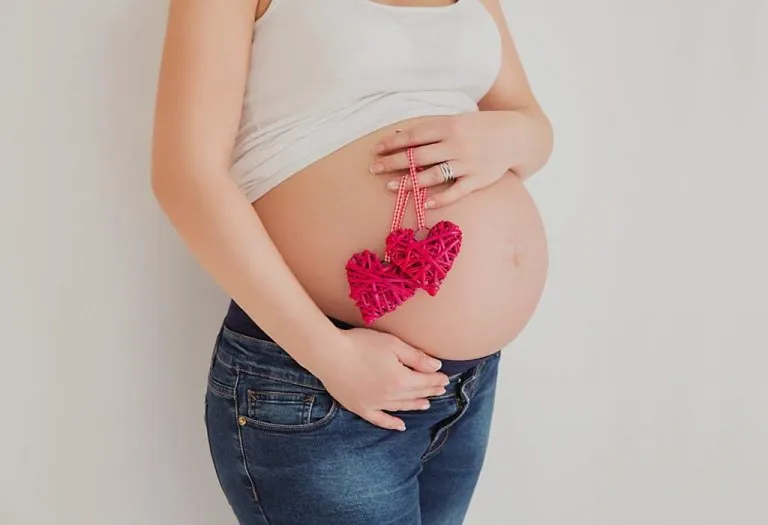Conjoined Twins (Siamese Twins) – Types, Causes and Symptoms

Being pregnant with twin babies can be an ecstatic experience for would-be parents, filled with anticipation and excitement as they prepare to welcome two new lives. However, some twins can be joined by their skin and other internal organs; such babies are referred to as conjoined twins. Statistically, one in every 200,000 twins can be conjoined, and a concerning 40 to 60 percent of conjoined twins arrive stillborn, highlighting the serious nature of this condition. The following article provides a comprehensive view of what are conjoined twins.
What Are Conjoined Twins?
In simple language, conjoined babies are twins attached together or babies who are physically connected to each other. Conjoined twins or monozygotic twins are partially connected and do not separate from each other. In most twin pregnancies, the embryos separate from two or more babies, but when the embryos do not separate completely and remain physically connected, they develop into conjoined twins. In conjoined twins the embryos are mostly joined at the chest, abdomen or the pelvis, they may share one or more internal organs. The first conjoined twins were Chang and Eng, who were born in Siam in Thailand and since then conjoined twins are also known as Siamese twins.
Types of Conjoined Twins
Conjoined twins may be joined at one or more places, and their type depends on where they are joined. They may share body parts or other internal organs. Following are the types of conjoined twins:
1. Omphalopagus
These types of conjoined twins are joined near the abdomen or the belly button. They usually share their liver or other lower body parts like small intestine etc.; however, they do not share their hearts.
2. Thoracopagus
Such types of conjoined twins are joined at the chest. They usually share a heart, liver and other upper body organs. Most conjoined twins fall under this category.
3. Parapagus
These kinds of conjoined twins are joined sideways in the pelvic region, all or part of the chest and abdomen. The twins may have two or more limbs, but they have two heads.
4. Ischiopagus
Such cases of conjoined twins are joined at the pelvic region, either face to face or back to back. These twins share a may liver, gastrointestinal tract and genital organs.
5. Pygopagus
These types of twins are joined back to back at the base of their spines and the hips. Where some twins may share the gastrointestinal tracts, others may share genital organs.
6. Rachipagus
Such types of conjoined twins are joined back to back along the length of the spine. In very rare situations conjoined twins are joined this way.
7. Craniopagus
These types of twins are joined at the head, but their faces are not joined. Most cases of conjoined twins at the head share part of the skull, but they usually have separate brains.
8. Cephalopagus
Such types of congenital twins are joined at the face and the upper part of the body. Both the faces appear on the opposite sides of the same head, and they also share the brain. Such twins seldom survive.
How Are Conjoined Twins Formed?
Twin babies form in two conditions i.e. either a woman produces two eggs and they both get fertilized, or the single egg divides after the fertilization process. In the case of two eggs and two sperms, fraternal twins are born, whereas, in case of one egg division, identical or paternal twins are born.
However, in the case of conjoined twins, the single egg does not separate completely after fertilization. The partially separated egg turns into conjoined twins. These twins are identical twins and are of the same sex. In the womb, they share the same amniotic cavity and placenta.
Causes
Monozygotic or identical twins are born when one single fertilized egg splits and grow into two separate embryos. Generally, the division of the fertilized egg takes place between eight to twelve days after the conception. The embryos thus split, start to develop specific structures and organs of their own. However, any division of the egg that takes place later than thirteen to fifteen days may completely stop in between, and this situation may result in conjoined twins.
It is also believed that sometimes two separate embryos may also fuse together in the early stages of development resulting in conjoined twins.
What may cause either of the above situations, there is no scientific facts or evidence to support it. Therefore, there are no specific causes of conjoined twins.
Are There Any Signs That Indicate a Conjoined Twin Pregnancy?
No there are no specific signs or symptoms that may indicate that you are carrying conjoined twins. However, you may experience the following symptoms, just like any other twin pregnancy:
- Your uterus may grow at a faster pace or in other words; it grows more than a normal pregnancy.
- You may feel more nauseous and fatigued or such symptoms are more pronounced.
- You may find your feet more swollen in comparison to the woman who is carrying a single baby.
- However, your pregnancy ultrasound will help you know if you are carrying conjoined twins. Your doctor may further guide you to undergo more tests to confirm if you are carrying conjoined twins.
Complications Associated With Conjoined Twin Pregnancy
Complications are synonymous with a conjoined twin pregnancy. The worst complication that may arise is a stillbirth, either inside the womb or after birth. Another aspect that may create problems is the delivery of conjoined twins. Normal delivery should not be considered as it may lead to further complications. Caesarean delivery is a more viable option, and it may be planned way before the due date. It is also important that a team of medical experts is present at the time of birth to handle complex cases.
Apart from the medical complications, a conjoined twin pregnancy can be emotionally quite challenging for the would-be-parents. They are counselled properly to face all the challenges that may arise during pregnancy or after the birth of the twins.
How Is Diagnosis Made?
A standard ultrasound or conjoined twins ultrasound during the first trimester of pregnancy will help your doctor diagnose that you are carrying conjoined twins. Your doctor may recommend you to undergo more tests a little later in pregnancy, such as detailed ultrasounds and echocardiograms, to determine the health of the twins, the functioning of their organs and the complexity of their physical connectivity. An MRI scan or magnetic resonance imaging will help the doctor know the exact area where the twins are joined and other organs that they share.
Treatment
The treatment for conjoined twins may vary depending upon how they are physically joined and which all internal organs they share. By carefully observing, your doctor may advise you any of the following treatment options:
1. Monitoring in Pregnancy
If you are carrying conjoined twins, your doctor will monitor your health closely during pregnancy. You can refer other specialists apart from your doctor to figure out the best treatment plan for your twins.
2. Delivery
Normal delivery is not feasible in the case of conjoined twins. Therefore, your doctor will suggest you for C-section or cesarean delivery. You will be operated much before your due date, generally two to four weeks prior to your due date. After the babies are born, their overall health is evaluated, and then further treatment plans are made.
3. Separation Surgery
Conjoined twins surgery may be suggested to you to separate your twin babies. Any kind of surgical procedure to separate the conjoined twins is usually performed two to four months after the birth. Sometimes emergency separation surgery may also be required. The doctor may consider the following factors before recommending surgery:
- The Health of the Twins: Whether both are healthy enough to withstand the surgery.
- Vital Organs: Whether or not the twins are sharing any vital organs, such as the heart.
- Reconstructive Surgery: What all kinds of reconstructive surgeries will be required after the separation surgery?
- Success Rate: What is the success rate of the separation surgery?
In some cases, separation surgery becomes the only option. This may happen in situations where the internal organs are not strong enough to support both the babies or where one of the twins is too weak to survive.
4. If Decided Not to Pursue Surgery
In a case where separation surgery is not feasible or the parents decide not to go ahead with the surgery, your doctor and other specialists can give suggestions on how to live a normal life with conjoined twins. There are many cases where conjoined twins are not separated and they spend their life staying connected.
5. Follow-up Care
Either the twins stay connected or are separated from each other; they will have to keep going for regular medical check-ups. In most cases, surgery or other methods of treatments are suggested, which require regular monitoring by the doctors.
What Should You Ask Your Healthcare Provider During the Visit?
When expecting conjoined twins, it’s crucial to have focused discussions with your healthcare provider. Here are some specific questions to consider asking during your visit:
- What organs are shared between my twins, and where is their connection?
- Will it be feasible to separate my twins after birth?
- Is immediate separation required once they are born?
- What measures can be taken to prevent premature labour?
- Are there specialists available to oversee and care for my babies both before and after delivery?
Your Outlook Towards Twins Who Are Attached Together
Once your doctor confirms that you are carrying conjoined twins, you may worry about the health and well-being of your unborn babies and their life that will follow. The question on everyone’s mind is can conjoined twins be separated? The answer is yes they can be separated and your doctor will help you understand it better. Though not all conjoined twins can be separated.
FAQs
1. What are the psychological effects on families of conjoined twins?
Families may experience unique emotional challenges, including anxiety about the twins’ health, societal perceptions, and the complexities of care, requiring tailored support and counseling.
2. How do conjoined twins experience physical sensations and pain?
Depending on their connection, conjoined twins may share certain nerve pathways, which can affect how they perceive pain and sensations, raising questions about their shared experiences.
3. What legal considerations should parents be aware of when raising conjoined twins?
Parents may need to navigate legal issues related to healthcare decisions, educational rights, and potential financial support, as each twin may have different needs and rights.
More than half cases of conjoined twin babies arrive stillborn and about 35 per cent live for a day only. The conjoined twins’ life expectancy is somewhere between 5 to 25 per cent. It is also seen that female conjoined babies have more survival rate than male babies.
Conjoined twins are rare and with proper medical guidance and support, you can take an informed decision about the well-being of your twin babies.
References/Resources:
1. Conjoined Twins; Cleveland Clinic; https://my.clevelandclinic.org/health/diseases/22895-conjoined-twins
2. Conjoined twins; Mayo Clinic; https://www.mayoclinic.org/diseases-conditions/conjoined-twins/symptoms-causes/syc-20353910
3. Conjoined Twins; Children’s Hospital of Philadelphia; https://www.chop.edu/conditions-diseases/conjoined-twins
4. Afzal. A, Montero. F; Conjoined Twins; National Library of Medicine; https://www.ncbi.nlm.nih.gov/books/NBK560839/
5. Conjoined Twins; Children’s Hospital Colorado; https://www.childrenscolorado.org/conditions-and-advice/conditions-and-symptoms/conditions/conjoined-twins/
6. Conjoined Twins; Stanford Medicine; https://www.stanfordchildrens.org/en/services/general-surgery/patient-stories/conjoined-twins.html
7. Multiple Pregnancy FAQs; American College of Obstetricians and Gynecologists; https://www.acog.org/womens-health/faqs/multiple-pregnancy
Also Read:
How To Get Pregnant With Twins?
Potential Complications of Twin Pregnancy
Fraternal Twins – Things That Parents Should Know
Types of Twins in Pregnancy – Identical & Fraternal
Was This Article Helpful?
Parenting is a huge responsibility, for you as a caregiver, but also for us as a parenting content platform. We understand that and take our responsibility of creating credible content seriously. FirstCry Parenting articles are written and published only after extensive research using factually sound references to deliver quality content that is accurate, validated by experts, and completely reliable. To understand how we go about creating content that is credible, read our editorial policy here.



























